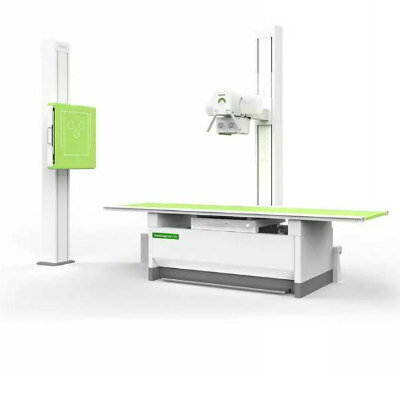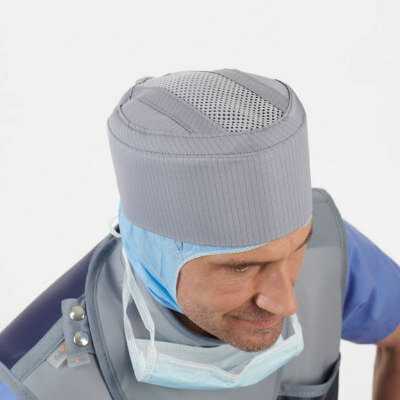Ampronix Offers One-Stop Solution for Cath Lab Display Monitors
|
By MedImaging International staff writers Posted on 29 Jul 2019 |

Image: To meet increasing demands, Ampronix offers tailored, one-stop sale, service and repair solutions at a faster and more cost-effective rate than other manufacturers (Photo courtesy of Ampronix).
A catheterization laboratory, commonly referred to as cath lab, is a vital piece of diagnostic equipment for hospitals and healthcare facilities. A cath lab is an exam room equipped with diagnostic imaging technology to provide physicians with visual access to chambers and arteries of the heart. In these spaces, a team of physicians perform life-saving procedures, including coronary angiography, catheterization, balloon angioplasty, percutaneous coronary intervention, congenital heart defect closure, stenotic heart valves and pacemaker implantations. A typical cath lab consists of a C-arm, image intensifier, X-ray tubes, and several displays.
Cath lab operations depend completely upon medical displays, which allow physicians to visualize a patient internally and perform the necessary procedure. The digital age has ushered in improved imaging technologies, which emit less radiation and also provide greater visual clarity to physicians. The adoption of CRT monitors in the cath lab brought about significant changes in their operations. CRT displays were followed by the advent of LCD screens. Most hospitals and healthcare facilities upgraded to LCD screens as they are slimmer, portable and offer higher resolution images. Currently, cath labs are witnessing yet another transition in medical monitors, as professionals are upgrading from LED displays to ultra-high definition 4K technology. Instead of using four to six displays, hospitals and healthcare facilities are upgrading to one large UHD 4K display. However, healthcare providers need to consider several variables before deciding upon the kind of upgrades they can make. Additionally, the switch from the LED model to the 4K display system introduces issues related to maintenance and safety.
Ampronix (Irvine, CA, USA), an authorized master distributor of the medical industry's top brands and a manufacturer of innovative technology, has been repairing and selling 4K monitors of different sizes for cath labs and hybrid ORs to hospitals for years. Ampronix undertakes sale, service and repair of cath lab monitors manufactured by several well-known companies such as Philips, GE, Siemens, Shimadzu, Toshiba, Hitachi, Eizo, Barco, Chilin and Optik View. Ampronix offers tailored, one-stop solutions at a faster and more cost effective rate than other manufacturers. The company has most models in stock that are available at half the OEM price.
The company’s services also include preventive maintenance, replacement of LCD, backlights, reflectors and power supplies. Any display failure amounts to an entire cath lab rendered obsolete until a replacement or repair solution is provided. However, the turnaround time for either of those protocols can be several weeks. Given the importance of the cath lab for healthcare providers, Ampronix ensures that they have zero downtime in the event of their monitors requiring service or replacement. The company has a readily available response team of ESD- and ASQ-certified technicians to assist and answer questions for urgent repairs. Nation-wide requests received by 2pm PST receive same-day or next-day delivery. Ampronix also has capable and competent customer service representatives for addressing all medical technology questions and concerns. With its extensive product knowledge, outstanding service, and state-of-the-art repair facility, Ampronix continues to meet the needs of the medical community and move forward with its goal to facilitate optimized patient care and improved physician workflow.
Cath lab operations depend completely upon medical displays, which allow physicians to visualize a patient internally and perform the necessary procedure. The digital age has ushered in improved imaging technologies, which emit less radiation and also provide greater visual clarity to physicians. The adoption of CRT monitors in the cath lab brought about significant changes in their operations. CRT displays were followed by the advent of LCD screens. Most hospitals and healthcare facilities upgraded to LCD screens as they are slimmer, portable and offer higher resolution images. Currently, cath labs are witnessing yet another transition in medical monitors, as professionals are upgrading from LED displays to ultra-high definition 4K technology. Instead of using four to six displays, hospitals and healthcare facilities are upgrading to one large UHD 4K display. However, healthcare providers need to consider several variables before deciding upon the kind of upgrades they can make. Additionally, the switch from the LED model to the 4K display system introduces issues related to maintenance and safety.
Ampronix (Irvine, CA, USA), an authorized master distributor of the medical industry's top brands and a manufacturer of innovative technology, has been repairing and selling 4K monitors of different sizes for cath labs and hybrid ORs to hospitals for years. Ampronix undertakes sale, service and repair of cath lab monitors manufactured by several well-known companies such as Philips, GE, Siemens, Shimadzu, Toshiba, Hitachi, Eizo, Barco, Chilin and Optik View. Ampronix offers tailored, one-stop solutions at a faster and more cost effective rate than other manufacturers. The company has most models in stock that are available at half the OEM price.
The company’s services also include preventive maintenance, replacement of LCD, backlights, reflectors and power supplies. Any display failure amounts to an entire cath lab rendered obsolete until a replacement or repair solution is provided. However, the turnaround time for either of those protocols can be several weeks. Given the importance of the cath lab for healthcare providers, Ampronix ensures that they have zero downtime in the event of their monitors requiring service or replacement. The company has a readily available response team of ESD- and ASQ-certified technicians to assist and answer questions for urgent repairs. Nation-wide requests received by 2pm PST receive same-day or next-day delivery. Ampronix also has capable and competent customer service representatives for addressing all medical technology questions and concerns. With its extensive product knowledge, outstanding service, and state-of-the-art repair facility, Ampronix continues to meet the needs of the medical community and move forward with its goal to facilitate optimized patient care and improved physician workflow.
Latest Industry News News
- Bayer and Google Partner on New AI Product for Radiologists
- Samsung and Bracco Enter Into New Diagnostic Ultrasound Technology Agreement
- IBA Acquires Radcal to Expand Medical Imaging Quality Assurance Offering
- International Societies Suggest Key Considerations for AI Radiology Tools
- Samsung's X-Ray Devices to Be Powered by Lunit AI Solutions for Advanced Chest Screening
- Canon Medical and Olympus Collaborate on Endoscopic Ultrasound Systems
- GE HealthCare Acquires AI Imaging Analysis Company MIM Software
- First Ever International Criteria Lays Foundation for Improved Diagnostic Imaging of Brain Tumors
- RSNA Unveils 10 Most Cited Radiology Studies of 2023
- RSNA 2023 Technical Exhibits to Offer Innovations in AI, 3D Printing and More
- AI Medical Imaging Products to Increase Five-Fold by 2035, Finds Study
- RSNA 2023 Technical Exhibits to Highlight Latest Medical Imaging Innovations
- AI-Powered Technologies to Aid Interpretation of X-Ray and MRI Images for Improved Disease Diagnosis
- Hologic and Bayer Partner to Improve Mammography Imaging
- Global Fixed and Mobile C-Arms Market Driven by Increasing Surgical Procedures
- Global Contrast Enhanced Ultrasound Market Driven by Demand for Early Detection of Chronic Diseases
Channels
Radiography
view channel
Novel Breast Imaging System Proves As Effective As Mammography
Breast cancer remains the most frequently diagnosed cancer among women. It is projected that one in eight women will be diagnosed with breast cancer during her lifetime, and one in 42 women who turn 50... Read more
AI Assistance Improves Breast-Cancer Screening by Reducing False Positives
Radiologists typically detect one case of cancer for every 200 mammograms reviewed. However, these evaluations often result in false positives, leading to unnecessary patient recalls for additional testing,... Read moreMRI
view channel
PET/MRI Improves Diagnostic Accuracy for Prostate Cancer Patients
The Prostate Imaging Reporting and Data System (PI-RADS) is a five-point scale to assess potential prostate cancer in MR images. PI-RADS category 3 which offers an unclear suggestion of clinically significant... Read more
Next Generation MR-Guided Focused Ultrasound Ushers In Future of Incisionless Neurosurgery
Essential tremor, often called familial, idiopathic, or benign tremor, leads to uncontrollable shaking that significantly affects a person’s life. When traditional medications do not alleviate symptoms,... Read more
Two-Part MRI Scan Detects Prostate Cancer More Quickly without Compromising Diagnostic Quality
Prostate cancer ranks as the most prevalent cancer among men. Over the last decade, the introduction of MRI scans has significantly transformed the diagnosis process, marking the most substantial advancement... Read moreUltrasound
view channel
Deep Learning Advances Super-Resolution Ultrasound Imaging
Ultrasound localization microscopy (ULM) is an advanced imaging technique that offers high-resolution visualization of microvascular structures. It employs microbubbles, FDA-approved contrast agents, injected... Read more
Novel Ultrasound-Launched Targeted Nanoparticle Eliminates Biofilm and Bacterial Infection
Biofilms, formed by bacteria aggregating into dense communities for protection against harsh environmental conditions, are a significant contributor to various infectious diseases. Biofilms frequently... Read moreNuclear Medicine
view channel
New SPECT/CT Technique Could Change Imaging Practices and Increase Patient Access
The development of lead-212 (212Pb)-PSMA–based targeted alpha therapy (TAT) is garnering significant interest in treating patients with metastatic castration-resistant prostate cancer. The imaging of 212Pb,... Read moreNew Radiotheranostic System Detects and Treats Ovarian Cancer Noninvasively
Ovarian cancer is the most lethal gynecological cancer, with less than a 30% five-year survival rate for those diagnosed in late stages. Despite surgery and platinum-based chemotherapy being the standard... Read more
AI System Automatically and Reliably Detects Cardiac Amyloidosis Using Scintigraphy Imaging
Cardiac amyloidosis, a condition characterized by the buildup of abnormal protein deposits (amyloids) in the heart muscle, severely affects heart function and can lead to heart failure or death without... Read moreGeneral/Advanced Imaging
view channel
New AI Method Captures Uncertainty in Medical Images
In the field of biomedicine, segmentation is the process of annotating pixels from an important structure in medical images, such as organs or cells. Artificial Intelligence (AI) models are utilized to... Read more.jpg)
CT Coronary Angiography Reduces Need for Invasive Tests to Diagnose Coronary Artery Disease
Coronary artery disease (CAD), one of the leading causes of death worldwide, involves the narrowing of coronary arteries due to atherosclerosis, resulting in insufficient blood flow to the heart muscle.... Read more
Novel Blood Test Could Reduce Need for PET Imaging of Patients with Alzheimer’s
Alzheimer's disease (AD), a condition marked by cognitive decline and the presence of beta-amyloid (Aβ) plaques and neurofibrillary tangles in the brain, poses diagnostic challenges. Amyloid positron emission... Read more.jpg)
CT-Based Deep Learning Algorithm Accurately Differentiates Benign From Malignant Vertebral Fractures
The rise in the aging population is expected to result in a corresponding increase in the prevalence of vertebral fractures which can cause back pain or neurologic compromise, leading to impaired function... Read moreImaging IT
view channel
New Google Cloud Medical Imaging Suite Makes Imaging Healthcare Data More Accessible
Medical imaging is a critical tool used to diagnose patients, and there are billions of medical images scanned globally each year. Imaging data accounts for about 90% of all healthcare data1 and, until... Read more



















